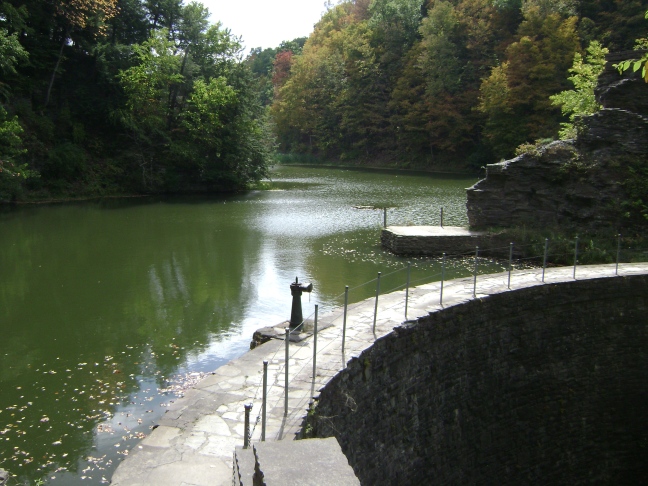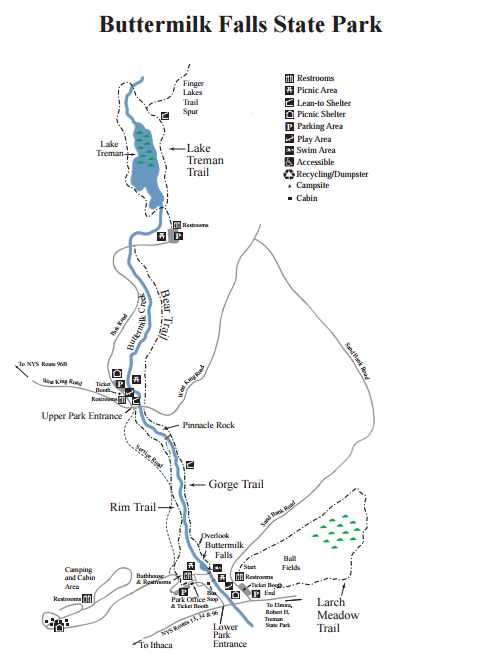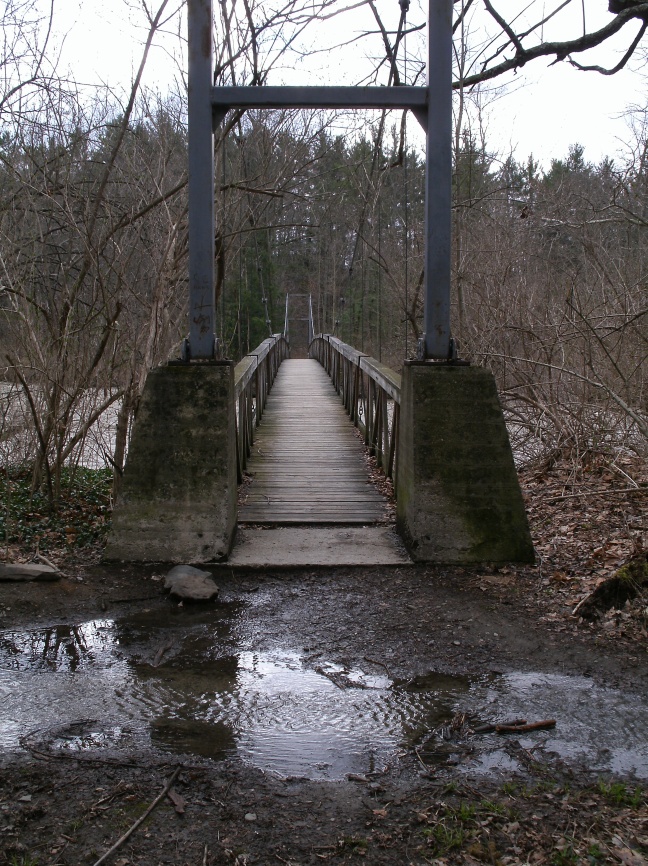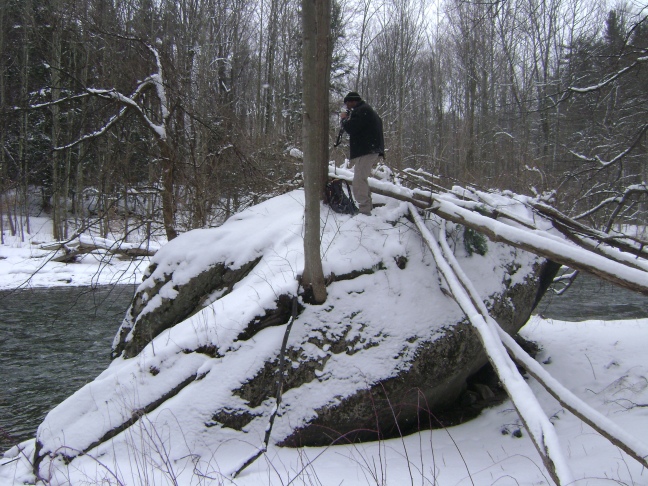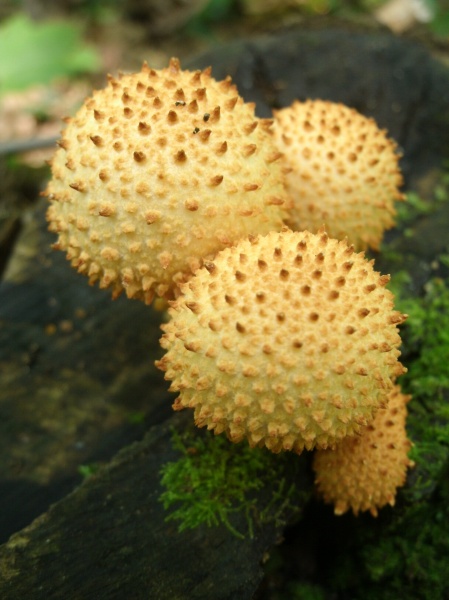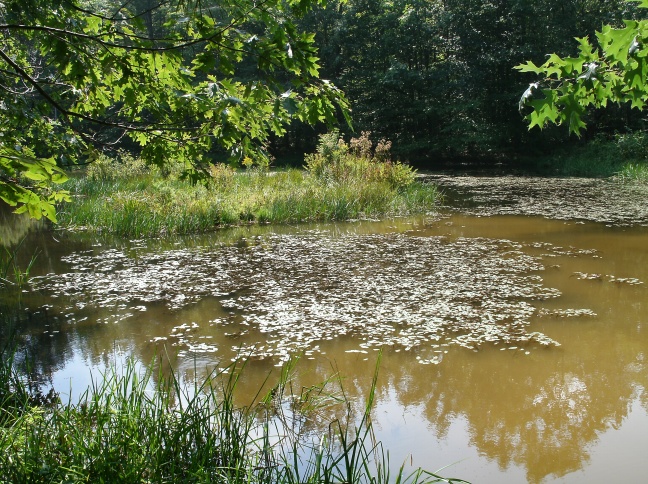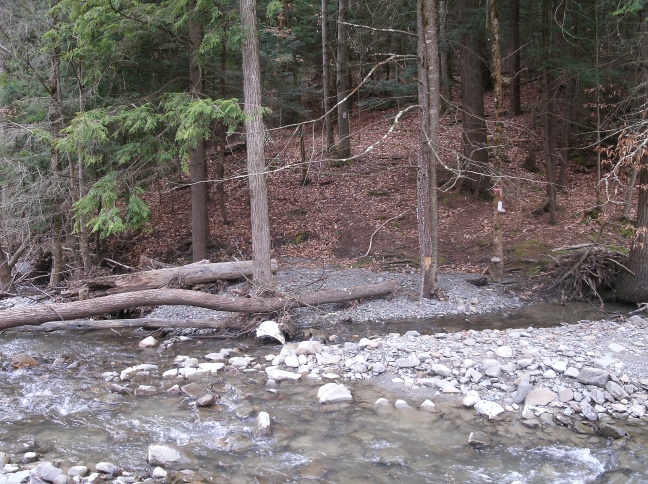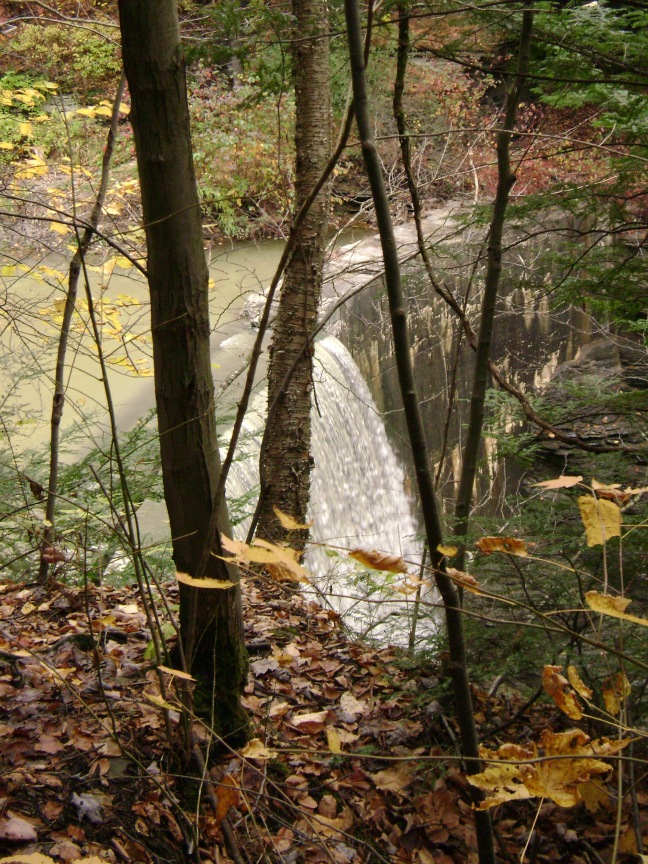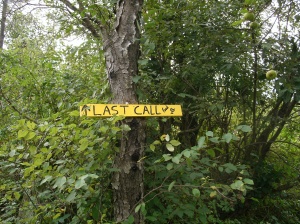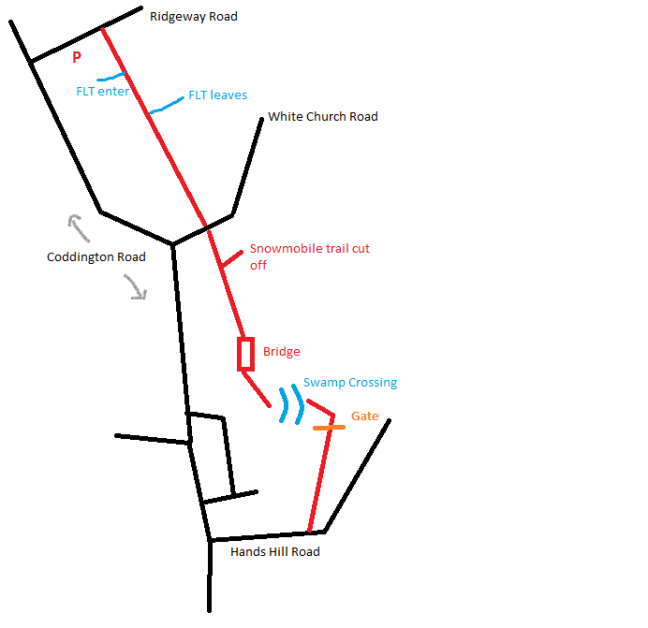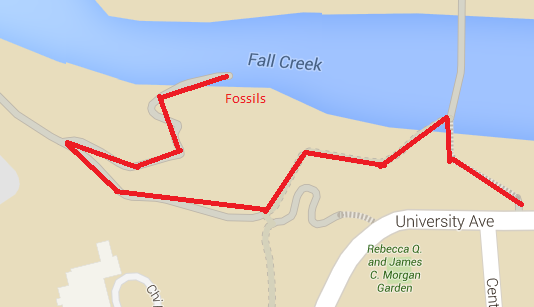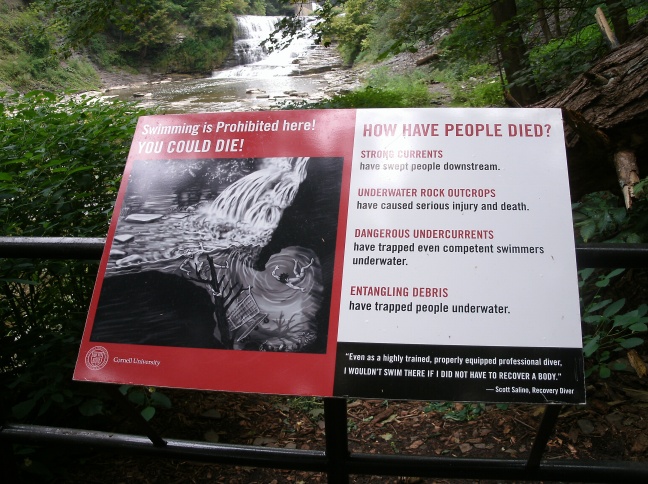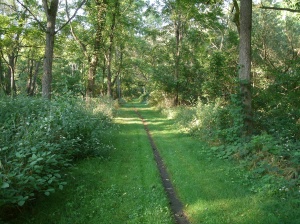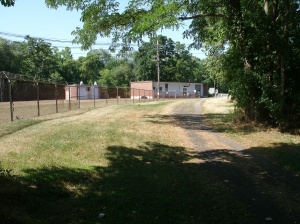Looking for a place to hike during the dreaded depths of hunting season when the woods are filled with boom of gun fire and the glow of safety orange? Danby State Forest is a great option. An unusual state forest in that it has virtually no deer or other animal life, (except for the occasional bird or grouse) this hike makes a good option precisely because it has no tasty wildlife within its borders. It also has several house ruins to visit, an overlook, and a well kept up graveyard for those interested in history. So go and enjoy a pleasant day of hiking without having to worry so much about gunshot wounds or getting sniped by arrows!
Location: Danby State Forest, near Ithaca, NY
Is it goat approved? Yep. This park is primarily a haunt of hikers, but given the length of the trails it is possible to take goats, (and even have them off leash), without ruining the experience for your fellow outdoor enthusiasts. Some trails are popular with dog walkers, and I have listed these in the beware section.
How you get there: You can park one of two places. Either enter the park on Michigan Hollow Road or Bald Hill Road off of Hwy 96B/Danby Road. On Bald Hill Road watch out for guineas/ducks that like to hang out in the road shortly after you turn off 96B. You want Bald Hill Road if your trip must absolutely involve the overlook, and you want Michigan Hollow if your trip must absolutely include the lean-to or the the bridge over the creek. The Michigan Hollow access area is easier with snow on the ground than the Bald Hill route.
Parking wise, if you come in on Bald Hill Road the pavement will end and the gravel will start. A road will go off to your right to a parking area, but don’t park here. Instead, continue down the hill to where the road makes a very sharp turn, (and becomes Station Road) and a less well kept gravel road goes off straight ahead into the woods. This less well kept gravel road is what you want to go down. Park on the edge of the road where you please, and the trails you want cross this road. There is a small graveyard on your right after you climb a short hill about 1/4 mile from the road juncture. In this vicinity are also some old house ruins to your left. The first trail crossing, (which you take the right hand side of), for the overlook is BEFORE the graveyard in a low lying area. The second is past the graveyard a ways at what looks like a pull off for cars.
If you come in on Michigan Hollow Road you will pass a dog training facility and the pavement will become gravel. Look for a stand of apple trees and a rough pull off on the RIGHT hand side of the road. Park here, (this parking area is not on the map!). There is a short bridge over the creek, which may be slick for goats in wet/snowy weather. On the other side of the bridge the trail forks. Take the right hand side for the lean-to, house ruins, vernal pools, and flat section of trail that follows an old rail line. Take the left hand to cross the old mill ruins, go to the HOV trail, or head towards the overlook. The lean-to trail is VERY popular with dog walkers and back packers.
Time for hike: The distance is approximately 11 miles round trip as memory serves.This is a loop hike with lots to visit, so plan accordingly.
Best season to do this hike: Pretty much any season of the year, but you will meet more people during the summer and the roads ARE NOT PLOWED during the winter around the state forest. Insects can be a problem during the height of the summer in the boggy and low lying areas of the park.
Trails to Take

First off, this hike is basically Abbot’s Loop with a little bit of extra sight seeing, but you will not see it marked as Abbot’s Loop during most of the trip (but the local day hikers will know what you are talking about if you run into one while lost and say you are trying to complete it). So keep that in mind.



I am going to assume you start at the Michigan Hollow Rd. parking area, but you can start at the other spot as well. Given the traffic to the lean-to I would do that stretch first. Start out at the parking area, walk through the apple trees to the bridge over the creek. At the fork, go right. As you proceed along the flat trail that follows the old rail line, look to your right for small foot trails turning off into the woods. When you spot these, follow them if you want to go see some old house foundations. If not, stay on the main trail.
After about a mile or less of walking a white blaze trail (the FLT!) will turn (i.e. double blaze) off the flat trail, up a short rise, and disappear to your right. Follow it. It will wind off into the woods, heading down hill. You will come down into an open area under pine trees, with a creek at the bottom. Cross the creek at the small bridge and go up the hill to the lean-to. Behind the lean-to (used to be blue blazed trail) is the pit toliet should it be needed. Bring your own toilet paper!

Once you are done exploring at the lean-to you cross back over the creek and either come back the way you came, or go out to the road by following the FLT out of the woods. If you go back the way you came, at the trail fork take the fork you didn’t before and go out through the woods. Just after the fork you will cross stone runs and foundations from a mill that once sat at this site. Then you will climb a hill and come up along side a clearing. This clearing is the end of the OHV trail. If you go into the clearing and look on the opposite side from the trail you entered on you will see a partially grown up trail winding off into the woods. This is easy to follow, and is a short cut out to Bald Hill Road near the intersection with Station Road. It is also a great place to take the goats for off-leash work as few people go this way. I have extended the OHV trail on the Park Service Map attached below to indicate that it does go all the way from the purple trail out to Bald Hill Road.

If you walk past the clearing you can continue the long way down to Bald Hill Road. Once you reach this gravel road take a minute to walk up the road away from the intersection with Station Road to the well kept graveyard and past the house ruins. Then walk back down to the crossing and continue along the trail. There will be a steep climb now, culminating in a clearing with a picnic table and fire ring at the summit and a nice view of the surrounding countryside, (good place for lunch). Then continue on the loop back down the hill and cross the road. The remainder of the loop is up and down through the forest, with a nice stretch along a creek bed where I have run into the occasional grouse. The trail will dump you back on Michigan Hollow Road in the vicinity of where you originally parked, and that ends the hike.

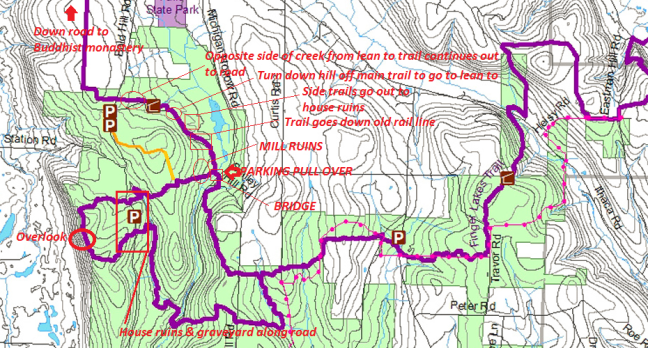
BE WARNED!
- The gravel roads around the park are not plowed in winter.
- Sometimes cars will drive down the road near the small graveyard, so keep an eye out as you walk this road.
- People camp at the overlook and the lean-to at times, which may not be a great situation to walk up on with an off leash goat if they are say eating tasty things for breakfast a goat may want!
- The trail out to the lean-to is very popular with backpackers and dog walkers, especially midday. However, there is also a pit toilet at the lean-to for those who don’t think defecating in the great outdoors is an experience they want and some neat house ruins, so visit at your own risk.
In sum: The silence of this forest, with its lack of animal life, will creep even the most hardened hiker out. Therefore this is the perfect hike to take that goat who feels the need to sing, (or well scream), while working like the dwarves off Snow White. Hi-Ho, Hi-Ho anyone?









